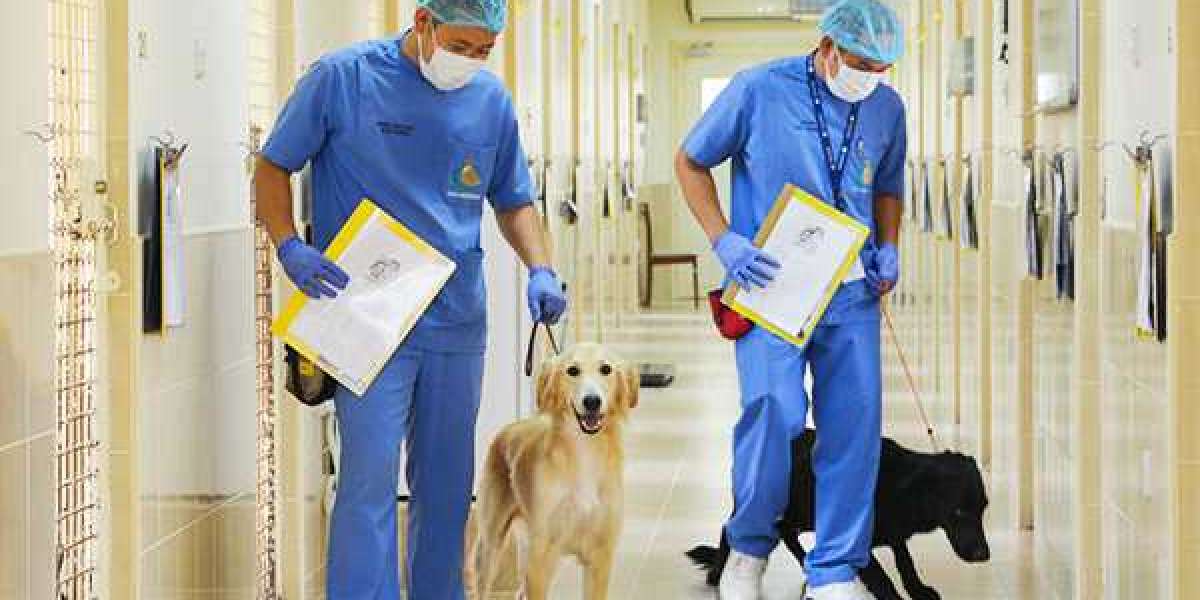Pets bring joy, companionship, and unconditional love into our lives. Whether you have a dog, cat, rabbit, bird, or another animal companion, caring for and training your pet is essential for ensuring their health, happiness, and well-being. Proper pet care is not just about meeting their physical needs; it’s also about providing emotional and mental stimulation, ensuring safety, and fostering positive behavior through training.
In this comprehensive guide, we’ll explore the fundamentals of pet care, essential training techniques, and how to create a harmonious relationship with your animal companion. From understanding your pet’s needs to troubleshooting common behavior issues, this blog will equip you with the knowledge to be a responsible and loving pet parent.
Why Pet Care and Training Matter
Before diving into the specifics of pet care and training, it's essential to understand why both are so crucial for your pet's well-being.
Health and Longevity: Proper care, including feeding a balanced diet, regular exercise, and veterinary visits, can help prevent illnesses and extend your pet’s life.
Behavioral Well-Being: Well-trained pets are happier and less likely to engage in destructive or undesirable behaviors. They are more manageable in public spaces and can better interact with other pets and humans.
Safety: Training helps keep pets safe, both inside the home and outdoors. A trained pet is more likely to respond to commands, avoid dangerous situations, and behave appropriately in public.
Emotional Bonding: Pet care and training help strengthen the bond between you and your animal. Understanding their needs and reinforcing positive behaviors helps foster trust and a deeper connection.
Essential Aspects of Pet Care
1. Nutrition and Diet
Proper nutrition is the cornerstone of good pet care. The right diet supports your pet’s overall health, including their energy levels, skin, coat, and immune system.
Species-Specific Diet: Each type of pet requires a different type of diet. For example, dogs need protein-rich food with essential fatty acids, cats require more animal-based proteins, and rabbits need high-fiber hay for digestion.
Age-Appropriate Food: A pet’s nutritional needs change as they age. Puppies and kittens need food that supports growth, while adult pets require a balanced diet to maintain their weight and energy levels. Older pets often need specialized diets to manage arthritis, heart disease, or kidney problems.
Hydration: Always ensure your pet has access to fresh water. Dehydration can lead to serious health issues, especially in hot weather or after exercise.
Portion Control: Overfeeding or underfeeding can lead to obesity or malnutrition. Follow the feeding guidelines provided by your pet’s food brand, but adjust for your pet’s activity level and individual needs.
Treats and Snacks: While treats are a great way to reward your pet, moderation is key. Choose healthy, low-calorie treats and make sure they don’t make up more than 10% of your pet’s daily calorie intake.
2. Grooming and Hygiene
Grooming your pet not only keeps them looking their best but also plays a crucial role in their health and comfort.
Brushing: Regular brushing helps to reduce shedding, prevent matting, and reduce hairballs, especially in long-haired breeds. It also stimulates the skin and improves blood circulation. Some pets, like cats, benefit from brushing their teeth to prevent plaque buildup.
Bathing: Depending on your pet’s breed and activity level, baths may be required every few weeks or months. Use a pet-friendly shampoo, as human products can be too harsh on your pet's skin.
Ear and Eye Care: Clean your pet’s ears regularly, especially if they have floppy ears or are prone to infections. Keep an eye out for excessive discharge or odors that could signal an infection. Similarly, keep the fur around their eyes trimmed and wipe away any discharge with a damp cloth.
Nail Trimming: Long nails can cause discomfort and lead to joint problems. Trim your pet’s nails regularly, using proper pet nail clippers. If you're unsure how to trim, seek advice from a professional groomer or vet.
3. Exercise and Enrichment
Just like humans, pets need physical and mental exercise to stay healthy and happy. Exercise is not only about maintaining a healthy weight but also about stimulating your pet's mind and providing them with socialization opportunities.
Dogs: Dogs, especially active breeds, need daily walks, playtime, and opportunities to interact with other dogs. Activities like fetch, tug-of-war, and agility exercises are great ways to keep your dog physically and mentally engaged.
Cats: Though less demanding than dogs, cats need stimulation as well. Interactive toys like feather wands, laser pointers, and puzzle feeders can provide mental and physical exercise for your feline friend.
Small Mammals and Birds: Rabbits, guinea pigs, hamsters, and birds all require exercise as well. Give them space to roam in a safe area, or provide climbing structures and toys to keep them active.
Mental Stimulation: Toys that challenge your pet’s intelligence—like treat-dispensing puzzles or scent-based games—can prevent boredom, anxiety, and destructive behavior.
4. Veterinary Care and Preventative Health
Regular veterinary visits are essential for monitoring your pet's health and catching potential issues early. Your pet will need vaccinations, flea and tick treatments, and annual check-ups to ensure they’re in good health.
Vaccinations: Keep your pet’s vaccinations up to date to protect them from contagious diseases. Different pets require different vaccines, and some vaccines need boosters, so always check with your vet.
Parasite Prevention: Fleas, ticks, and worms can cause serious health problems. Use flea and tick prevention medications, and make sure your pet is regularly treated for internal parasites, especially if they go outdoors.
Dental Health: Dental disease is common in pets, especially dogs and cats. Regular brushing (with pet-safe toothpaste) and providing dental chews can help prevent plaque buildup and tooth loss.
Spaying/Neutering: Spaying or neutering your pet is not only a responsible choice for preventing overpopulation, but it can also reduce the risk of certain health problems and behavioral issues.
Pet Training: Creating a Well-Behaved Companion
Training your pet is essential for fostering good behavior, ensuring safety, and building a strong bond with your animal. Whether you’re training a dog, cat, or another pet, the principles of positive reinforcement are key.
1. Basic Commands for Dogs
Dogs are the most trainable pets, and teaching them basic commands is a great way to ensure they behave well at home and in public.
Sit: This is one of the first commands you should teach your dog. Hold a treat in front of your dog’s nose, then slowly move it upwards and back, which will encourage your dog to sit. Once they do, say "sit" and reward them with the treat.
Stay: Teach your dog to stay in place until released. Start by having them sit, then give the "stay" command and step back a few feet. Gradually increase the distance, rewarding them for staying in place.
Come: The “come” command is vital for your dog’s safety. Call your dog’s name and say “come,” then reward them when they come to you.
Leash Training: Leash training helps teach your dog not to pull on walks. Start by walking with your dog on a short leash and rewarding them when they walk calmly beside you.
Crate Training: A crate can be a safe space for your dog and an essential tool for potty training and separation anxiety. Make the crate a positive space by placing treats and toys inside.
2. Training Cats and Other Pets
While cats and other pets like rabbits may not respond to training in the same way dogs do, they can still learn important behaviors.
Litter Box Training: Most cats instinctively know to use the litter box. However, if your cat is having accidents, try changing the litter or moving the box to a quieter, more accessible location.
Training Cats: To train a cat to stop undesirable behaviors (like scratching furniture), use positive reinforcement by rewarding them when they use scratching posts. Never punish a cat, as this can lead to fear-based behaviors.
Other Pets: Small mammals and birds can also be trained, although the process may be different. Rabbits can learn to use a litter box, while birds can learn basic tricks and commands using clicker training.
Common Behavior Issues and How to Address Them
Pets, like humans, can develop behavioral issues. Some of the most common problems include:
Separation Anxiety: If your pet becomes excessively anxious or destructive when left alone, try crate training, increasing exercise, and using calming products like pheromone diffusers.
Excessive Barking: For dogs, excessive barking can be reduced through consistent training and attention to the root cause, whether it’s boredom, fear, or attention-seeking.
Aggression: Aggressive behaviors in pets, especially dogs, may be triggered by fear or a lack of socialization. Working with a professional trainer and addressing the underlying cause of aggression can help.
House Soiling: If your pet is not using their litter box or going potty indoors, ensure they are properly trained and that there are no medical issues causing the behavior.
Conclusion: The Joy of Responsible Pet Care
Providing excellent care and training for your pet is essential to building a strong, healthy, and lasting relationship. When you meet your pet’s physical, emotional, and mental needs, and incorporate consistent training, you create a happy and well-behaved companion who can thrive in your home and beyond.
As a pet parent, the most important thing is to be patient, compassionate, and understanding of your pet’s unique needs. Whether you’re caring for a playful puppy or an older cat, the effort you put into your pet’s care and training will be returned tenfold in love and loyalty. Through positive reinforcement, healthy routines, and regular veterinary visits, you’ll ensure your furry friend lives a long, happy life by your side.














